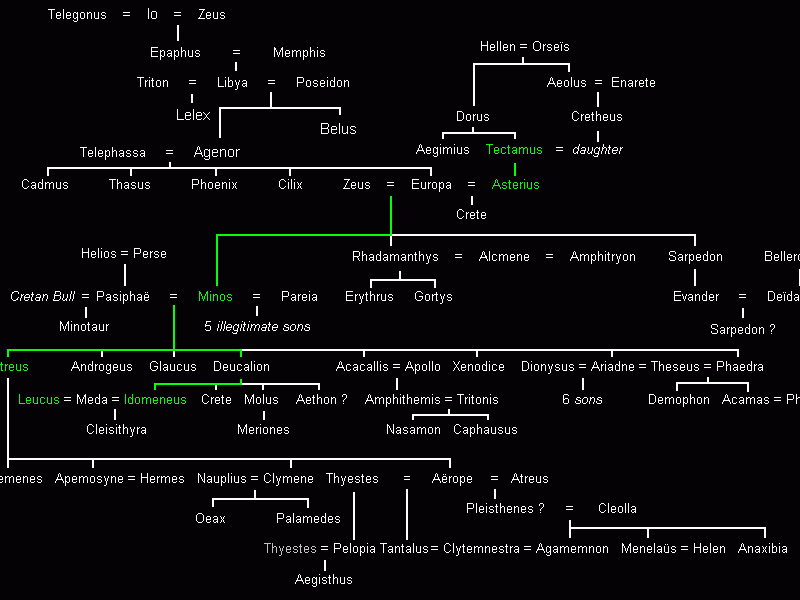Amphion & Zethus
Polydorus (Πολύδωρος) was king of Thebes and the only son of Cadmus. Polydorus married Nycteïs (Nycteis), who bore him a son, Labdacus (Λάβδακος). His reign was brief. Labdacus was only a child when he became king, so Nycteus (Νυκεύς), son of the Sparti Chthonius and the king's grandfather, ruled Thebes as his regent.
Nycteus, however, discovered that his other daughter Antiope (Ἀντιόπη) had been seduced and impregnated by Zeus. Zeus had come to Antiope in the guise of a satyr. Antiope ran off to Sicyon and married the Sicyonian king, Epopeus (Ἐπωπεύς). Nycteus died of either grief (or shame) or he was killed in the battle against Sicyon. Nycteus' brother Lycus (Λύκος) became regent for Labdacus. He killed Epopeus in battle and brought his niece Antiope back to Thebes.
When Antiope gave birth to twins, Amphion (Ἀμθίων) and Zethus (Ζήθος), her uncle ordered the twin infants to be exposed in the mountains of Cithaeron. The two infants were discovered by a cowherd, who brought the twins up as if they were his own sons.
Labdacus ruled briefly until he was killed in battle against Pandion of Athens. However, Labdacus left a son named Laïus (Laius or Laios) who was too young to rule, so Lycus became regent again.
Lycus gave Antiope to his wife Dirce (Δίρκη), who cruelly mistreated his niece for many years, until she escaped and found her sons. Amphion and Zethus avenged their mother's tormentor and had Dirce killed by binding their stepmother to a bull.
When Amphion and Zethus avenged their mother's ill treatment upon Dirce, they forced Lycus out of Thebes (or they killed Lycus), and the brothers became co-rulers of Thebes. When the brothers usurped the throne, Laïus was spirited away to Pisa.
But according to the geographer Pausanias, Antiope's suffering didn't end with Dirce's death. Dirce was a faithful worshipper of Dionysus. Dionysus inflicted madness upon Antiope, who wandered all about Greece until she met Phocus, son of Ornytion and grandson of Sisyphus. Phocus cured and married Antiope. When they died, they were buried in a single grave.
Despite being twins, they had different skills and attitudes. Zethus was the strongest man at the time, and enjoyed manly actions that required physical strength, such as fighting and hunting. He couldn't understand Amphion's love for music. Amphion excelled with the lyre and singing.
It was Amphion and Zethus who built the walls and the seven gates of Thebes. When the wall of Thebes was under construction, Zethus carried the heavy stones to build the wall from the mountains of Cithaeron. There, Amphion showed what his music could do. While playing his lyre, the stones were so charmed by the music that they followed Amphion. They also renamed the city to Thebes, after Zethus' wife, Thebe.
Amphion, on the other hand, married Niobe, daughter of Tantalus. They had seven sons and seven daughters. Niobe boasted that her children were more beautiful than those of the goddess Leto were. Apollo and Artemis avenged the insult to their mother by killing all of Niobe's children. Niobe wept so much that she was turned into a weeping stone. See the Folly of Niobe for a more detailed account on the fate of Niobe in the Wrath of Heaven page.
When Amphion and Zethus died, the young prince returned to Thebes and Laïus (Λάιος) became king.
By Jimmy Joe


